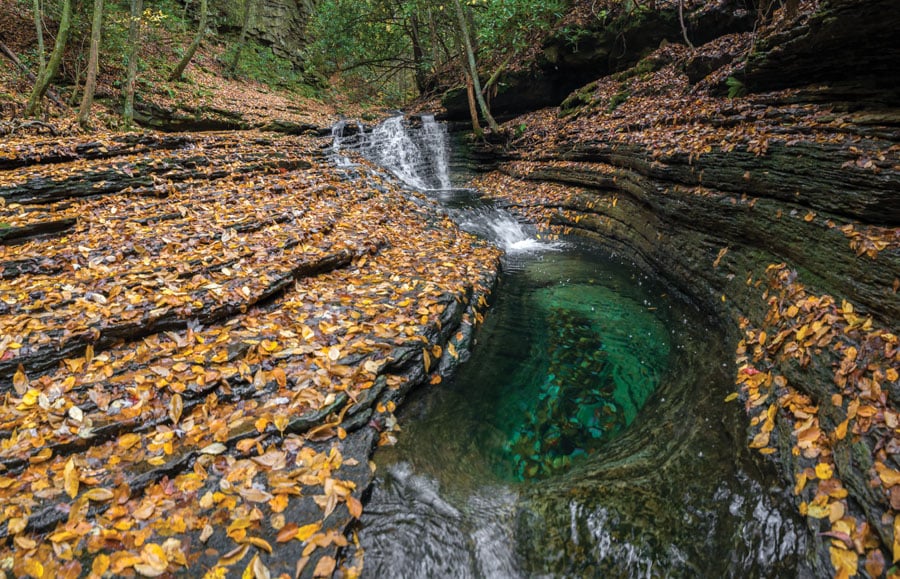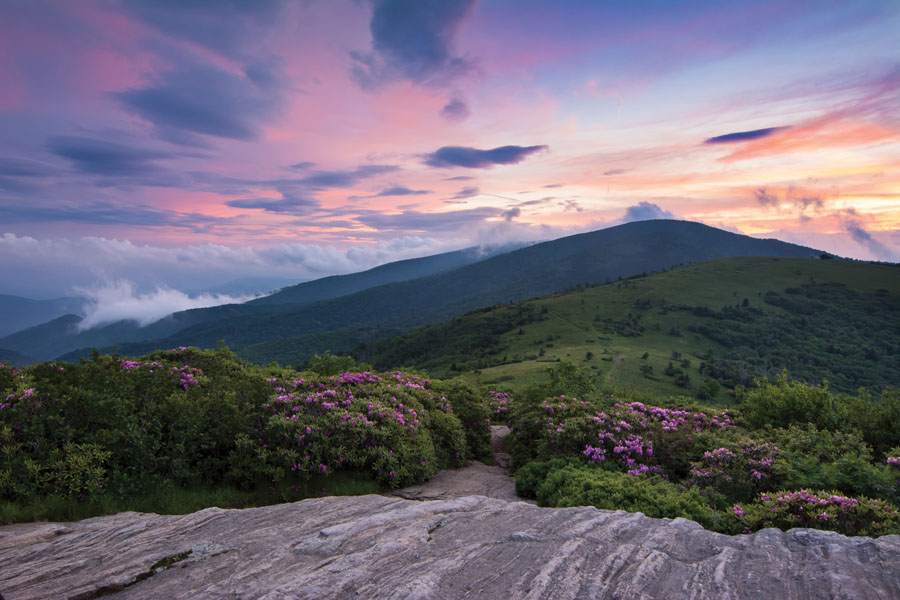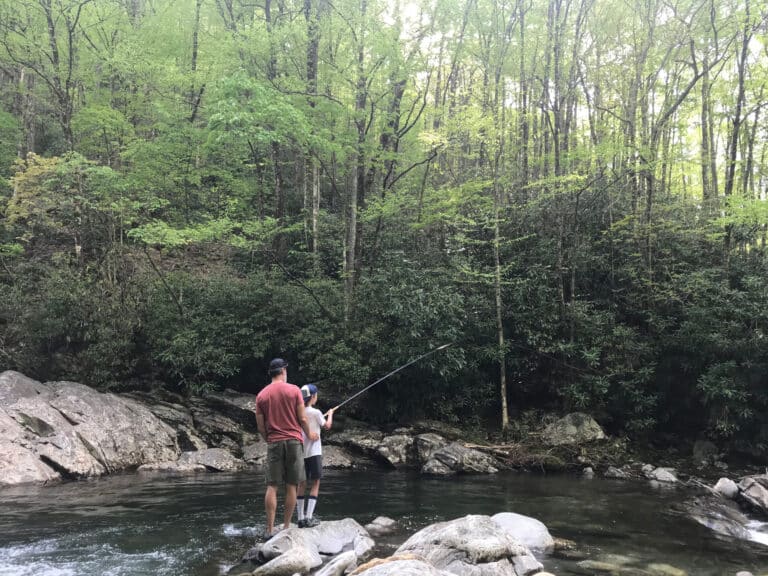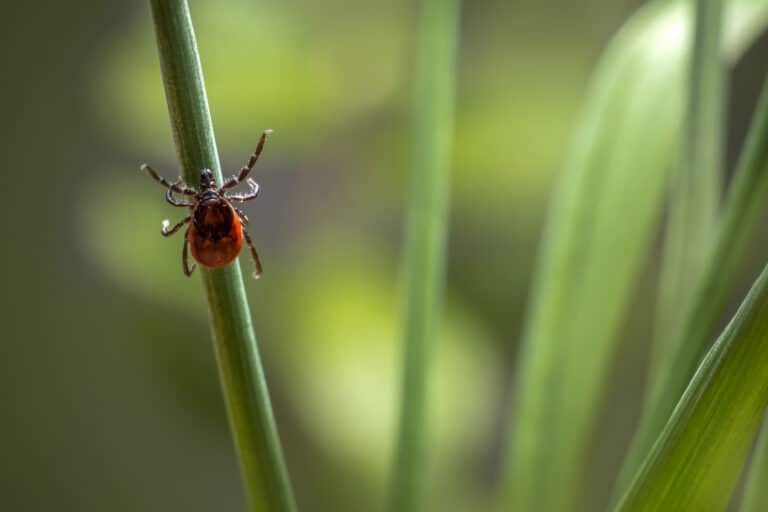The parking lot is full as I pull into Carvers Gap, the low swag nestled between Roan Mountain and the balds to its east. I’ve driven up on a Wednesday for a hike on the Appalachian Trail, and the scene is impressively crowded for an early morning during the workweek. At least 20 people are milling around at the trailhead, while a sniffing match between two dogs nearby has devolved into a chorus of growls. I find myself hurrying out of the car and into the woods.
It’s no secret that places like the Roan Highlands are increasing in popularity. According to the Outdoor Industry Association, more than 144 million Americans participated in outdoor activities last year. Here in the South, where large urban centers close to the mountains supply an increasing number of people seeking to get outside, the growth rate of participation in outdoor activities has outpaced the rest of the nation. A report from the U.S. Forest Service estimates that the number of regional adults spending time outside has risen by nearly seven million in recent decades.
That growth has undoubtedly been a benefit to communities across the Blue Ridge looking to tourism as a way to diversify their economies, but more people heading into a finite area of public land inevitably means overcrowding. And it’s not just popular outdoor destinations like the Roan that are becoming packed—the less-traveled portions of the region are being discovered, too.
I’ve experienced that change myself. A few miles over the mountain from my house in far Southwest Virginia sits the Devil’s Bathtub, an out-of-the-way swimming hole that’s hidden up a gloriously wet, seven-mile loop trail that crosses the Devil’s Fork of Big Stoney Creek nearly 15 times. It’s a beautiful hike, but it’s hardly unique by southern Appalachian standards. There are bigger swimming holes and more scenic waterfalls nearby within the same county, let alone the larger region. But for years, it was one of those special places where you could slip off and be alone in the woods, even on a summer weekend.

Then, the internet happened.
Starting sometime in 2012, photos of the Bathtub began surfacing on social media, many showing a cascading series of pools below an idyllic stone bridge. The images attracted a huge amount of attention because they seemed so out-of-place for Virginia, and that’s because they were: many of the photos were actually mislabeled shots from a similarly-named hike in Ohio.
Even though it was a case of mistaken identity, the damage had already been done. Within a year’s time, that hidden, out-of-the-way hike became arguably one of the most popular swimming holes in the East. It’s since been featured on “best of” lists by the Weather Channel and Reddit, and several hundred cars now routinely descend each weekend on a cramped trailhead lot that holds six or seven vehicles, at best. Food wrappers and dirty diapers line parts of the trail, and rescues of unprepared hikers are commonplace. This past summer, an acquaintance who lives near the trailhead announced that her family was moving to get away from the crowd.
Seeing both these local treasures and well-known destinations like the Roan become so popular can be bittersweet. On the one hand, our public lands really are public—these aren’t places that any of us can serve as gatekeepers to. But at the same time, don’t we share at least some responsibility for making sure that our love for a place doesn’t contribute to ruining it? I’ve spent more time than I like to admit fuming about people irresponsibly promoting the Devil’s Bathtub, yet as I was recently sifting through online photos of the place in a fit of rage about seeing it ruined by overcrowding, I came across something that looked familiar: one of my own images, posted online from before the hike became popular and shared on a tourism website. The monster I’d been raging against was myself.
At Carvers Gap, I don’t have any illusion of completely escaping the crowds, but I know just where to go. I hurry by photographers posted along the A.T. on the summits of Round and Jane Balds, then scoot past several families on the side trail to 6100-foot Grassy Ridge. Just beyond the summit, there’s an unmarked manway that’s easy to miss unless you know where to look. I locate it and wriggle an extra half-mile out to a knob of exposed rock well below the ridge crest. The Toe River Valley splays out below me, and the Black Mountains fade into blue on the horizon. Despite the crowds nearby, I sit there for an hour and never see another soul.
The overlook isn’t really secret—there are fresh footprints in the dirt when I arrive, after all—but it’s still “my” spot, a place that at least feels like it’s undiscovered. Will it stay that way forever? I doubt it. Am I a hypocrite for writing about it in a magazine? Probably. I certainly don’t have easy answers for how we can best balance the need to share our mountains with others while preserving the character that makes them so unique. But if you do head out there and find that spot on Grassy Ridge, at least do me a favor: keep it between us, okay?








